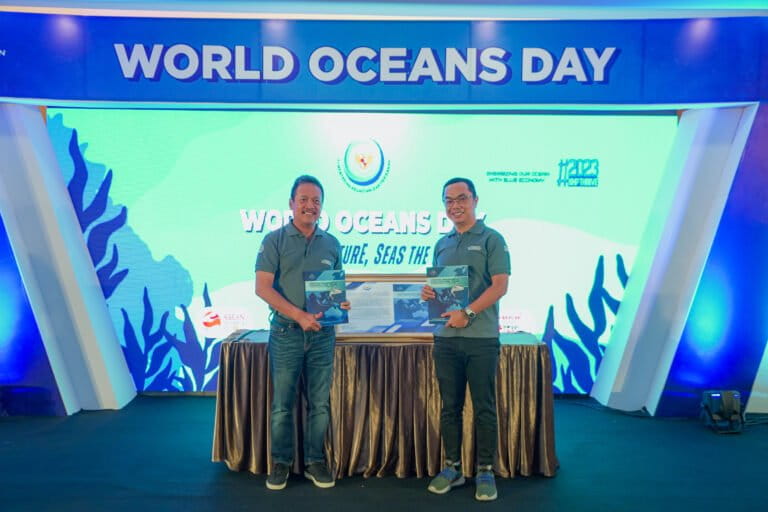- Indonesia will reduce its overall tuna catch by 10% over the course of three years, citing unsustainable current levels of fishing.
- The government is also pushing for more tuna fisheries in Indonesia to obtain sustainable certification and eco-labeling, as part of wider efforts to show that it can manage the species within its waters.
- Fisheries experts have welcomed the move to protect the world’s tuna populations, but say other countries in the region should also be encouraged to reduce their catch to make it effective.
- Indonesia catches more tuna than any other country, accounting for about 16% of the world’s total tuna supply.
JAKARTA — The Indonesian government says it will reduce its annual tuna catch, the world’s largest, by a tenth in an effort to sustain the future of the fisheries.
The Indonesian fisheries ministry earlier this month published its harvest strategy paper showing that it will progressively cut its tuna catch volume by 10% of the 2021 level over the course of three years. It cited depleting populations of skipjack tuna (Katsuwonus pelamis) and yellowfin tuna (Thunnus albacares) as justification for the move.
The paper, which Mongabay has reviewed, says this strategy should “ideally” come into effect no later than 2026 as part of the implementation of the ministry’s quota-based and zone-based fisheries policy. A ministerial decree is also expected to be issued as the legal basis for the tuna harvest strategy, which provincial governments will then have to implement, according to officials.
“The publication of this harvest strategy document embodies Indonesia’s sovereignty and commitment to managing and ensuring the sustainability of tuna,” Sakti Wahyu Trenggono, the fisheries minister, said at a World Ocean Day event on June 9.

Indonesia catches more tuna than any other country, accounting for about 16% of the world’s total tuna supply. In 2021 it produced 791,000 metric tons of tuna, including skipjack, yellowfin and mackerel tuna (Euthynnus affinis), with a value of around 22 trillion rupiah ($1.47 billion), according to the fisheries ministry. However, intensive fishing of wild tuna from the country’s waters has made the fishery unsustainable, with much of Indonesia’s fishing grounds in the Pacific and Indian oceans already fully exploited, and many tuna species subject to overfishing.
The latest paper also expands on an interim harvest strategy that was already applied since 2018, and consisted of, among others, harvest control rules and monitoring for skipjack, yellowfin and bigeye tuna (Thunnus obesus) in the country’s fishery management areas. This harvest strategy followed previous efforts by the Indonesian government to improve tuna fisheries management, including limiting the use of fish-aggregating devices and imposing temporary closures of fishing areas.
Indonesia’s archipelagic waters are rich fishing grounds for albacore (Thunnus alalunga), yellowfin, bigeye and southern bluefin tuna (Thunnus maccoyii). Other areas around the country’s 17,000 islands are key spawning grounds for the fish. The country’s tuna fishery is an important source of livelihood for coastal communities in the country and a key source of food for consumers around the world. Exports amounted to 174,764 metric tons, valued at more than 10.6 trillion rupiah ($710 million), destined mostly for the United States, Japan, Thailand, Saudi Arabia, the European Union, Australia, Vietnam, the United Kingdom and the Philippines.

The government is also pushing for more tuna fisheries in Indonesia to obtain sustainable certification and eco-labeling. Various schemes exist to certify that fish stocks are sustainable, environmental impacts are minimized, labor rights are respected, supply chain transparency and traceability are in place, and management is governed by best practices.
The latest paper is also the Indonesian government’s effort to show tuna regional fisheries management organizations (tRFMOs) that it can manage the species within its waters.
Under the United Nations Convention on the Law of the Sea (UNCLOS), which Indonesia ratified in 1985, highly migratory species like tuna must be managed on the basis of international or regional cooperation. However, based on the results of a large tuna-tagging study conducted by The Pacific Community in 2009-2010, there are indications that most of these tuna are recaught in Indonesian waters, implying an exchange of stocks with other fisheries areas and with the wider western and central Pacific Ocean.
“This is an important step in the process of developing, testing and implementing strategies for the utilization of yellowfin tuna, skipjack and bigeye tuna in Indonesian archipelago waters,” said Agus Suherman, the interim director-general of capture fisheries at the fisheries ministry.

Some fisheries experts have praised the government for this latest policy to protect the world’s tuna populations and ensure the future of global seafood supply.
“If we fail to manage skipjack and yellowfin tunas in our region, then it will be us that face the subsequent risks,” said Fayakun Satria, head of fisheries research at the Indonesian National Research and Innovation Agency (BRIN).
Fayakun said Indonesia still had much work to do to improve tuna fisheries management, such as ensuring a balanced population between male and female fish; addressing socioeconomic impacts on tuna fishers; and urging neighboring countries like the Philippines and Vietnam to also implement their own harvest strategies as tuna are highly migratory species.
“If we reduce our catch, but they aren’t reducing theirs, then it will impact the success of this harvest strategy, especially knowing that reducing catch or controlling catch is not necessarily popular among businesses,” Fayakun said. “If Indonesia is doing this alone, I’m not sure if this will be effective.”
Basten Gokkon is a senior staff writer for Indonesia at Mongabay. Find him on Twitter @bgokkon.
See related from this reporter:
Indonesia looks into tuna farming to boost aquaculture, reduce overfishing
FEEDBACK: Use this form to send a message to the author of this post. If you want to post a public comment, you can do that at the bottom of the page.